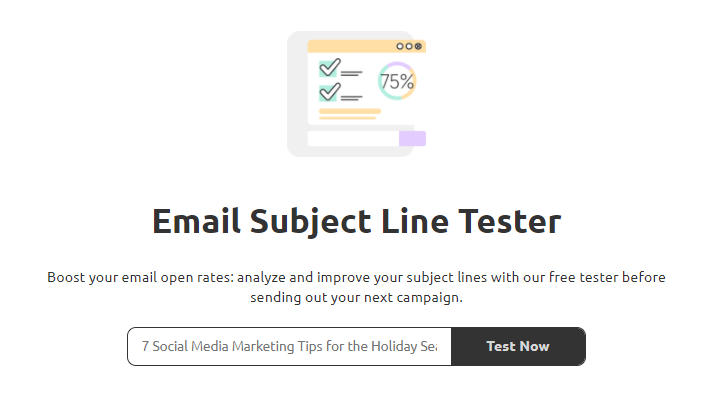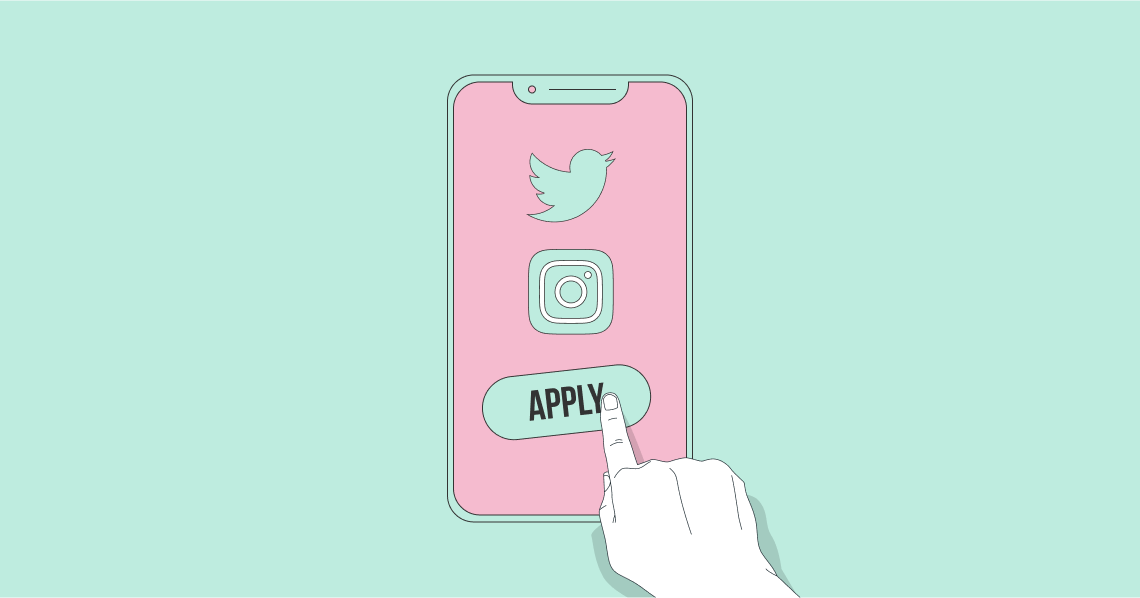Did you know that 20.4% of all emails either go undelivered or unread?
Yes, that’s right. Only about 80% of emails are delivered to the intended inboxes and even then, there’s no guarantee that they will be opened or read.
Given the number of emails that people receive on a daily basis, it is tough for any marketer to get their emails noticed.
But, don’t worry! There are certain best practices that you can follow to improve your chances and be successful at email marketing.
Here are 15 email marketing best practices that you should follow to excel at email marketing.
Email Marketing Best Practices:
- 1. Use Welcome Emails
- 2. Send Emails Regularly But Don’t Spam
- 3. Do Not Use a No Reply Account to Send Emails
- 4. Trim Your Email Lists Regularly
- 5. Make it Easy to Unsubscribe
- 6. Personalize Your Emails
- 7. Use a Subject Line Tester
- 8. Leverage Segmentation and Targeting
- 9. Use Re-Engagement Emails to Get Your Customers Back
- 10. Add Visuals to Your Emails
- 11. Design Mobile-Friendly Emails
- 12. Use Email Templates
- 13. A/B Test Your Emails
- 14. Add Clear and Compelling CTAs
- 15. Provide Value
1. Use Welcome Emails
Welcome emails should be automatically sent as soon as a person subscribes to your emails or joins your loyalty program. This helps you build a better relationship with the person and introduce them to all that they can expect from your emails.
This sets the right context for all future communications and is usually well-received by most subscribers. According to the latest study by GetResponse, triggered emails like welcome emails get very high open rates (44.05% on average).
2. Send Emails Regularly But Don’t Spam
Getting the email frequency right is another aspect that you need to take seriously. This frequency should depend on how active and engaged your subscribers are. However, as a general rule, anything more than 1-2 emails a week is overkill.
Per the previously cited GetResponse study, the email open rates decrease with the frequency of emails.

Image Source: GetResponse
For most businesses, a weekly newsletter is a good idea to keep their audience engaged. If you have a highly engaged and active subscriber list, then you can increase this frequency.
3. Do Not Use a No Reply Account to Send Emails
It is very important to keep the line of communication open between you and your subscribers. Most marketers fail at this, and you can see the proof in your inbox, which is probably filled with emails that you cannot reply to.
Sending emails from a human’s account adds more credibility to it and usually gets better open rates. Moreover, you should give your subscribers the option to reply to your emails as it improves engagement.
4. Trim Your Email Lists Regularly
This might seem counterintuitive, but it is actually an email marketing best practice that most smart marketers follow. More than half of marketers, per a Litmus study in 2018, regularly remove inactive people from their mailing lists.
This best practice should be followed to keep an updated and healthy email list with active subscribers. Sending emails to people who simply are not interested is a waste of your time and theirs.
5. Make it Easy to Unsubscribe
Adding to the previous point, you should not only trim the list from your end, but also provide your subscribers with an easy way out. Yes, you heard it right! Give them a way out.
It is just as simple as the concept of free will. They should choose to receive your emails, or else they will simply go to spam or will be unread. No point wasting your efforts on people who are not interested.
Add an unsubscribe option to all of your emails and make it an easy process with just one or two steps. You can use this as an opportunity to collect feedback and ask them why they are leaving. This will help you improve your email marketing campaigns in the future.
6. Personalize Your Emails
An average person receives several daily emails from multiple sources, but only reads a few of them. Simply adding a person’s name in the salutation or subject might do the trick and get your email noticed.
Per the previously-cited GetResponse study, personalized emails get higher open rates than those that are not. Email marketing tools can help you personalize your emails at scale.
7. Use a Subject Line Tester
There are several free subject line tester tools that you can use to optimize your email subject lines. You might be an expert at writing catchy subject lines, but it doesn’t hurt to check them using a professional tool.
Such tools can tell you exactly how your subject line rates and ways to improve it. You should incorporate this as a best practice that all your employees follow before sending marketing emails.

8. Leverage Segmentation and Targeting
Just like with any other marketing tactic, segmenting and targeting your audience is important for emails as well. Just building one huge email list of subscribers and sending them the same emails is a mistake.
You need to categorize your subscribers using demographic or behavioral factors and then send them emails that are relevant to them. According to an Econsultancy study, advanced segmentation is a focus area for 47% of marketers and behavioral targeting is for 39%.
9. Use Re-Engagement Emails to Get Your Customers Back
Your email marketing should not just focus on getting people to convert, but also to get old customers back. People who have bought from you once, know your brand, and are more likely to buy again if given the right incentive.
Send emails with exclusive offers and limited-time discounts to win those customers back. Repeat customers are better for your business in the long run, so don’t forget them when devising your email marketing strategy.
10. Add Visuals to Your Emails
Emails that are 100% text are boring, difficult to read, and can cause people to lose interest and leave. Adding visuals to your emails makes them more engaging and easier to read.
You can convey the most important message by adding text to your visuals and let the image do the rest. The easier it is for a reader to grasp the gist of your email, the higher the chances of them taking action.
See this email from Sephora, for example. It clearly explains the offer using minimal text and a large product image and other visuals. It is simple, visually-appealing, and effective.

11. Design Mobile-Friendly Emails
A lot of people use mobile devices to read their emails on-the-go. So, it is important that you use mobile-responsive email designs that display well, even on mobile devices.
If your emails appear distorted or take too much time to open, then people may lose interest and not read them. To ensure that you do not lose subscribers just because they read emails on mobile devices, use designs that render well on such devices.
You can either choose to create your own designs or simply use mobile-responsive email marketing templates that are easily available online.
12. Use Email Templates
This is an effective and time-saving email marketing best practice that all marketers should follow. It is simply inefficient to create all emails from scratch, every single time. It takes unnecessary time that you could, otherwise, utilize for something else.
You can easily get hundreds of free email templates from different online sources. You can customize them per your brand guidelines and use them for your business or marketing emails.
Even if you prefer designing your own emails, you can still create some basic templates that you can reuse later. This saves time and effort and is very useful in the long run.
13. A/B Test Your Emails
This is more like a strategy used by smart marketers rather than a best practice followed by everyone. However, you should make it a best practice in your business.
A/B testing helps you improve the overall effectiveness of your emails and can get you much better results. So, continuously perform A/B tests on your emails and use the insights you gather to keep improving your designs.
14. Add Clear and Compelling CTAs
The ultimate goal of email marketing is to get your subscribers to take some desired action. Whether it is to watch a video or shop your latest collection, you want your emails to get people to do something. And that is accomplished using calls-to-action.
Add CTAs to all your emails telling your readers clearly what you want them to do next. Your CTAs should be placed in a way that they stand out from the rest of the content and are clearly visible. Use bright colours and large fonts, if you must, but get people’s attention to the CTAs.
15. Provide Value
This goes without saying, but still, we need to emphasise this—provide value to your subscribers. No one will read your emails if you don’t provide them with any value. Give people a reason to read your emails and engage further with your content.
Understand who your audience is and what they would like to read about or get from your emails. Are they looking for useful guides or content resources to help them? Or are they simply interested in exclusive deals or offers and would like to be notified about those?
Do your homework and find out what works best for your audience. Then design emails that can deliver that to them.
What Next?
These are useful and effective email marketing best practices followed by expert marketers. Make these a regular part of your email marketing business process and set yourself up for success.
Don’t just stop here. Add to this list and create your own best practices and you learn from your experiences.


